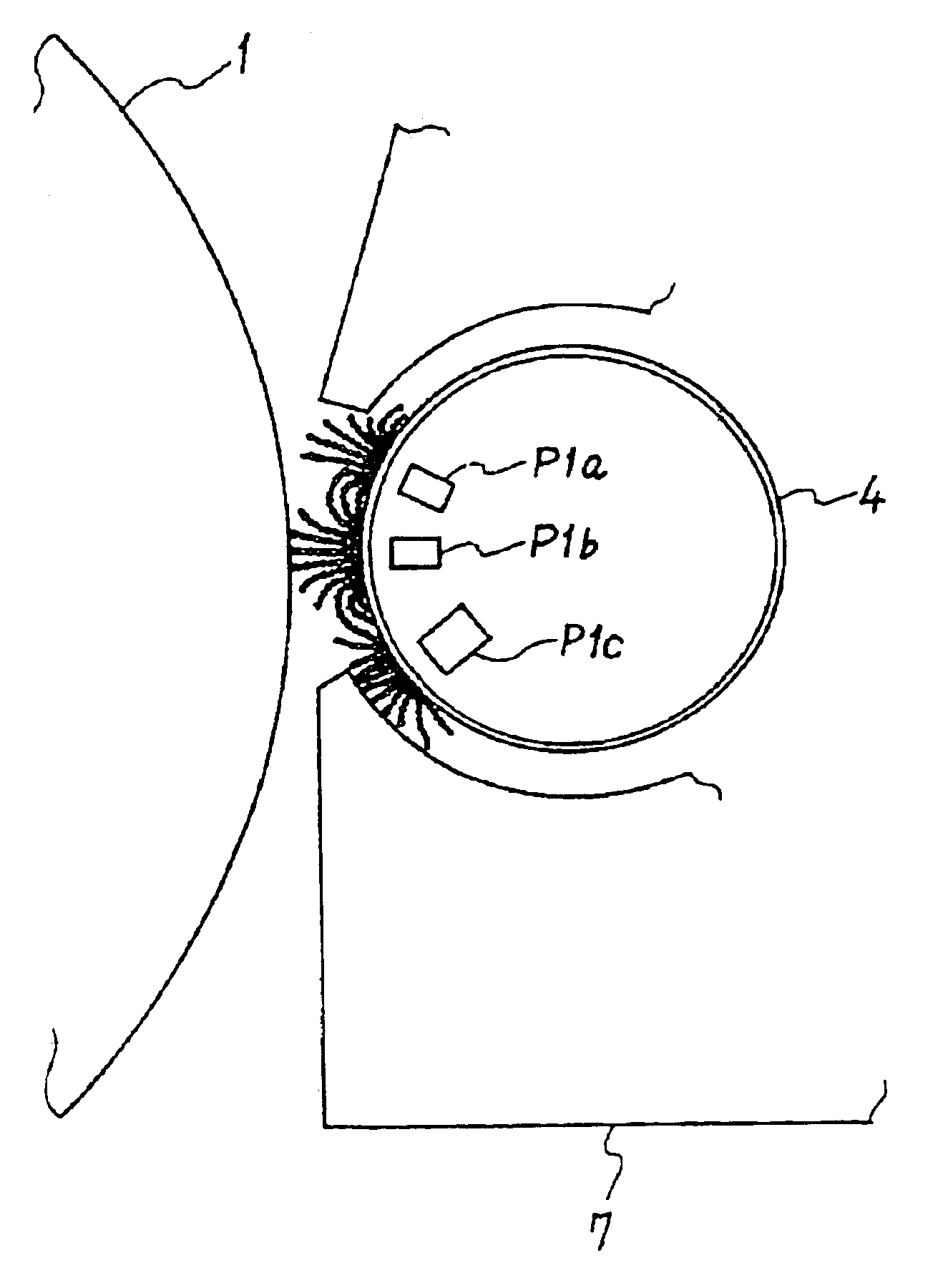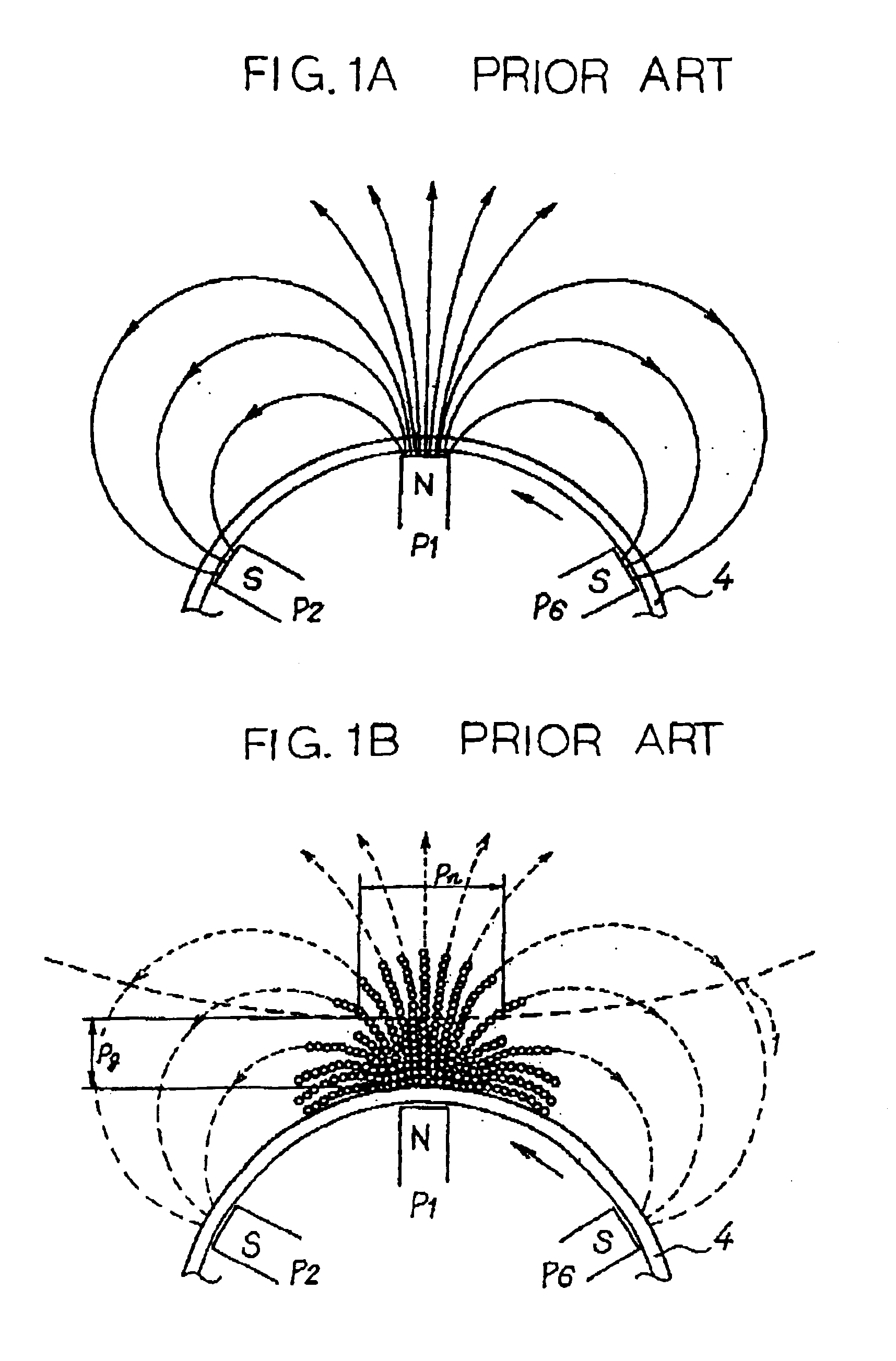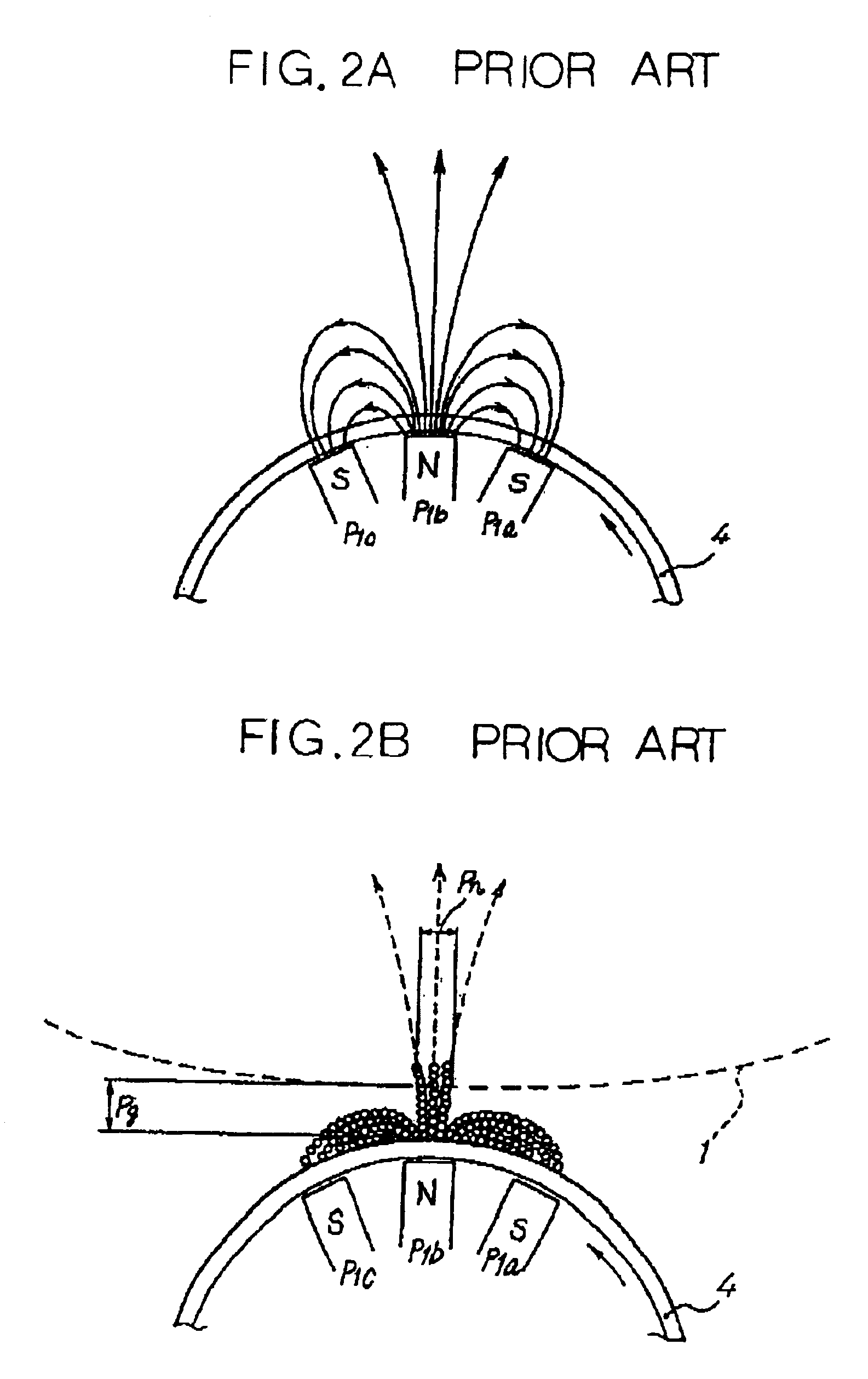Developing device having a developer forming a magnet brush
- Summary
- Abstract
- Description
- Claims
- Application Information
AI Technical Summary
Benefits of technology
Problems solved by technology
Method used
Image
Examples
first embodiment
[0059]A first embodiment of the present invention, which is mainly directed toward the first object stated earlier, will be described with reference to FIG. 4. As shown, the laser printer includes a photoconductive drum or image carrier 1 rotatable in a direction indicated by an arrow A. While the drum 1 is in rotation, a charge roller or charging means 50 uniformly charges the surface of the drum 1 in contact with the drum 1. Subsequently, an optical writing unit or latent image forming means 51 scans the charged surface of the drum 1 in accordance with image data to thereby form a latent image on the drum 1. The charge roller 50 and optical writing unit 51 may, of course, be replaced with any other suitable charging means and latent image forming means, respectively.
[0060]A developing device or developing means 2, which will be described specifically later, develops the latent image to thereby produce a corresponding toner image. An image transferring unit or image transferring me...
experiment 1
[Experiment 1]
[0115]In the developing device 2 used in Experiment 1 to be described, the attenuation ratio of the normal flux density is 40% or above while the amount of developer fed is between 65 mg / cm2 and 95 mg / cm2, so that the magnet brush is short and dense, as stated earlier. It is therefore necessary to cause the sleeve 4 to move at a linear velocity 1.1 times to 3.0 times, in practice about 1.5 times to about 2.0 times, higher than the linear velocity of the drum 1, as measured at the developing zone, thereby maintaining high image quality. However, an increase in the linear velocity of the sleeve 4 brings about the carrier deposition problem. In light of this, Experiment 1 was conducted to determine a relation between the saturation magnetization value of the carrier and the carrier deposition on the drum 1.
[0116]In Experiment 1, the toner T and each of the carriers C1 through C3 were mixed to prepare two developers having a toner content of 5 wt % each. In the developing ...
experiment 2
[Experiment 2]
[0122]The toner T and each of the carriers C4 and C5 were mixed together to prepare two developers having a toner content of 5 wt %. Again, the laser printer with the developing device 2 was operated to output ten prints with each of the two developers. The prints were then estimated as to the number of white spots for a single print.
[0123]FIG. 15 lists the results of Experiment 2. As shown, when the developer containing the carrier C1 with a static resistance of 16.2 log Ω was used, the mean number of white spots for a single print was thirty-eight point three. By contrast, the mean number of white spots for a single print was seven point nine when the developer containing the carrier C4 with 12.4 log Ω was used or ten point five when the developer containing the carrier C5 with 13.8 log Ω was used. By extended studies, we found that when the static resistance was as low as 12 log Ω or above, but 14 log Ω or below, carrier deposition on the drum 1 was less conspicuous...
PUM
 Login to View More
Login to View More Abstract
Description
Claims
Application Information
 Login to View More
Login to View More - R&D
- Intellectual Property
- Life Sciences
- Materials
- Tech Scout
- Unparalleled Data Quality
- Higher Quality Content
- 60% Fewer Hallucinations
Browse by: Latest US Patents, China's latest patents, Technical Efficacy Thesaurus, Application Domain, Technology Topic, Popular Technical Reports.
© 2025 PatSnap. All rights reserved.Legal|Privacy policy|Modern Slavery Act Transparency Statement|Sitemap|About US| Contact US: help@patsnap.com



